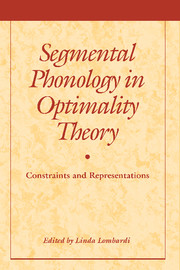Book contents
- Frontmatter
- Contents
- List of Contributors
- Introduction
- I The Content of Representations
- II The Content of Constraints
- III The Structure of the Grammar: Approaches to Opacity
- 8 Local Conjunction and Extending Sympathy Theory: OCP Effects in Yucatec Maya
- 9 Structure Preservation and Stratal Opacity in German
- Index
9 - Structure Preservation and Stratal Opacity in German
Published online by Cambridge University Press: 05 July 2014
- Frontmatter
- Contents
- List of Contributors
- Introduction
- I The Content of Representations
- II The Content of Constraints
- III The Structure of the Grammar: Approaches to Opacity
- 8 Local Conjunction and Extending Sympathy Theory: OCP Effects in Yucatec Maya
- 9 Structure Preservation and Stratal Opacity in German
- Index
Summary
Introduction: Less Is More
One of the defining characteristics of the theory of Lexical Phonology, as developed in the work of Kiparsky (1982, 1985), Mohanan (1986), and Borowsky (1986, 1990), among others, was an approach that simultaneously stressed the separation and the unity of the lexical (word-level, structure-preserving) and postlexical (phrase-level, non-structure-preserving) phonology. The central idea was that even though the two constitute different modules of the grammar, the rules and their ordering are actually invariant across strata. If a rule is not seen to be active in a given stratum, this was ascribed to one of two factors: (i) the rule has been “turned off” at an earlier stratum or (ii) the rule does not yet apply because its output is blocked by the principle of structure preservation. The overall computation of phonological form is thus partitioned into a lexical and a postlexical part, with different canons of well-formedness holding at the two levels. In this chapter, we will show that within Optimality Theory (OT) (Prince and Smolensky 1993) this view remains correct in essential respects, even though the formal implementation differs in important ways. The resulting model, a type of stratal OT that we will also refer to as “Weak Parallelism,” is parallelist in its basic operation, but explicitly recognizes the word phonology (lexical) and phrasal phonology (postlexical) as separate modules that operate in sequence.
- Type
- Chapter
- Information
- Segmental Phonology in Optimality TheoryConstraints and Representations, pp. 261 - 296Publisher: Cambridge University PressPrint publication year: 2001
- 9
- Cited by

